
Become a 3D animator for film and games! Get specialized training to fast-track your career with CG Spectrum’s online 3D animation courses. Learn directly from expert animators working on hit films and best-selling games. Find out more.
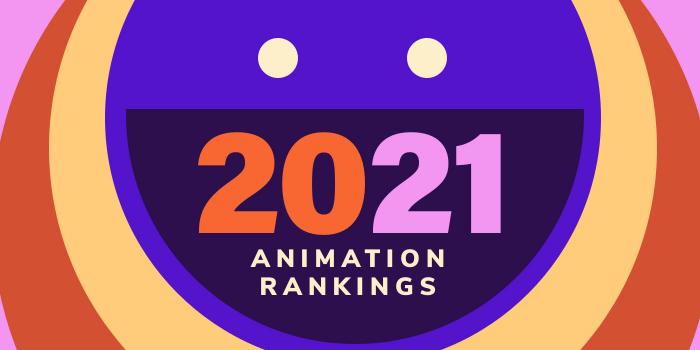
| Ranking | School | State |
|---|---|---|
| 1 | School of Visual Arts | New York |
| 2 | Rhode Island School of Design | Rhode Island |
| 3 | Pratt Institute | New York |
| 4 | New York University | New York |
| 5 | Rochester Institute of Technology | New York |
| 6 | Carnegie Mellon University | Pennsylvania |
| 7 | Massachusetts College of Art and Design | Massachusetts |
| 8 | Maryland Institute College of Art | Maryland |
| 9 | University of Pennsylvania | Pennsylvania |
| 10 | University of the Arts | Pennsylvania |
| 11 | Drexel University | Pennsylvania |
| 12 | The New School/Parsons | New York |
| 13 | University of Maryland Baltimore County | Maryland |
| 14 | Edinboro University | Pennsylvania |
| 15 | Emerson College | Massachusetts |
| 16 | Syracuse University | New York |
| 17 | Northeastern University | Massachusetts |
| 18 | Lesley University | Massachusetts |
| 19 | Dartmouth College | New Hampshire |
| 20 | University of Connecticut | Connecticut |
| 21 | New York Institute of Technology | New York |
| 22 | Towson University | Maryland |
| 23 | School of the Museum of Fine Arts at Tufts University | Massachusetts |
| 24 | Virginia Polytechnic Institute and State University | Virginia |
| 25 | Rutgers University | New Jersey |
Our 2021 list -our tenth annual- of the Top 25 Animation School Programs in the East. For an explanation of our ranking criteria, click here.
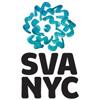
School of Visual Arts (SVA) has been a leader in the education of artists, designers and creative professionals for more than seven decades. With a faculty of distinguished working professionals, a dynamic curriculum and an emphasis on critical thinking, SVA is a catalyst for innovation and social responsibility. Comprising over 6,000 students at its Manhattan campus and over 39,000 alumni in 128 countries, SVA also represents one of the most influential artistic communities in the world. The College offers 31 undergraduate and graduate degree programs, and a full range of courses through its Division of Continuing Education.
Artists interested in studying animation may enter BFA Animation, BFA Computer Art, Computer Animation and Visual Effects or MFA Computer Arts programs. In each, the faculty includes some of the best artists in the industry, who bring knowledge and experience in multiple disciplines straight from the studio into the classroom. You will not only learn innovative drawing techniques and methods of storytelling, but also industry standard software.
BFA Animation students are immersed in hands-on experience, whether studying traditional, stop-motion or computer animation. Special working relationships with alumni-owned Plymptoons, Titmouse and Augenblick studios—as well as with other independent animation creators throughout New York—provide extraordinary opportunities for internships and part-time employment. BFA Animation students have produced pieces for non-profit organizations and public service organizations such as Ted-ED, UNICEF, and UNESCO.
Students in BFA Computer Art, Computer Animation and Visual Effects navigate a unique curriculum that focuses on the integration of 2D and 3D computer graphics within computer animation, visual effects and motion graphics. Students receive comprehensive instruction in 3D computer animation with advanced classes in 3D modeling, lighting, texturing, dynamics, character animation, and motion capture. Visual effects courses feature advanced instruction in digital video, green screen studio production, compositing, rotoscoping, and VFX animation.
Founded in 1986, the MFA Computer Arts Department was the first MFA program in the U.S. to focus on computer art. The program emphasizes creativity and a multidisciplinary approach to producing innovative animation, motion graphics and experimental art within a collaborative state-of-the-art production environment. Students in the program benefit from guest lectures that cover all areas of animation, motion graphics and visual art, workshops, visiting artists, and internship opportunities.
Graduates of the BFA and MFA animation and computer arts programs at SVA have gone on to open their own studios or land positions at some of the world’s top companies and digital studios including Blue Sky Studios, Disney Animation, DreamWorks Animation, ILM, MTV, Nickelodeon, Pixar, Warner Bros. Animation, Sony Pictures Imageworks, and independent studios around the world. They have become Academy-Award winners, Emmy-Award winners, Grammy winners, MacArthur Fellows, and Guggenheim Fellows.
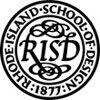
Rhode Island School of Design (RISD) was founded in 1877, making it one of the first art and design schools in the U.S. For the 2020-2021 school year, the school welcomed just over 2,200 students from around the world. Offerings include undergraduate and graduate degrees in 21 majors, a certificate program, one concentration, and continuing education courses that attract 5,800 students each year.
Degree programs are offered in Architecture, Art Education, Design or Fine Arts. For aspiring animators, the Film/Animation/Video (FAV) Department offers a BFA in FAV. Home to 145 students, FAV allows students to “explore the art of the moving image, learning to master the tools needed to articulate a creative vision, whether using film, animation, installations, interactive media or a combination,” says the school. Majors specialize in animation, live action or open media with the option to produce films in genres such as experimental, narrative, and documentary.
Regardless of specialization, all students have the opportunity to work on “more ambitious projects involving cinematography, lighting, sound design, character design, digital editing, compositing, producing, storyboarding and interactive programming.”
During this four-year program, students will also be exposed to critical review, film festivals, and visiting artists. An internship is part of the program as well as the opportunity for students to present their finished films to the community.
RISD graduates go on to become entrepreneurs or many have been hired at studios such as DreamWorks and Pixar, or networks like Fox, HBO and PBS.
Famous RISD alumni include Daniel Sousa, animator and director of the Oscar-nominated film Feral; Gus Van Sant, director of films such as Good Will Hunting, Finding Forrester, and Milk; Lance Wilder, animator for The Simpsons, and Seth Macfarlane, creator of Family Guy.

Situated in the historic Clinton Hill section of Brooklyn, New York, Pratt Institute prepares its nearly 5,000 students for careers in architecture, art, design, information science and liberal arts, and liberal arts and sciences. Founded in 1887, the school, which offers more than 25 undergraduate degree programs and concentrations along with more than 26 graduate degree programs, has additional campuses in Manhattan and Utica, New York.
At the main campus in Brooklyn, students are enrolled in programs in the schools of Architecture, Art, Design, and Liberal Arts and Sciences.
The School of Art houses the Department of Digital Art and the Graduate School of Art, home to the Digital Arts BFA Program and the MFA in Digital Animation and Motion Arts. The BFA has two emphasis areas: 2D Animation and 3D Animation and Motion Arts. Both areas prepare students for positions in digital animation, experimental fine arts, and interactive media.
In the 60-credit MFA program, students create “evocative” narrative and non-narrative films using 2D and 3D digital animation techniques, live action, and motion graphics. A number of electives are available including Advanced Digital Animation Techniques, Character Animation, Character Design, Compositing and Special Effects, Lighting and Rendering, Motion Dynamics, and Storyboard and Storytelling.
Students in both the BFA and MFA programs have many opportunities to intern at NYC production studios such as Cartoon Network, Curious Pictures, and Psyop Studios. Outside of NYC, options include Blue Sky Studios, Disney, and Sony Imageworks, to name a few.
After graduation, Pratt alumni can be found working at top studios such as Augenblick, Blue Sky Studios, Digital Domain, Disney Animation Studios, Gameloft, Industrial Light & Magic, NBCUniversal, Inc., Rhythm and Hues Studios, Sony Imageworks, and Titmouse.
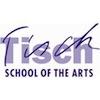
Founded in 1965, Tisch School of the Arts is part of New York University (NYU). Founded in 1831 and serving more than 60,500 students, New York University (NYU) is the largest private university in the U.S. With the highest number of international students in America, the school has degree-granting campuses in New York and Abu Dhabi, and it operates 11 global academic centers and research programs in more than 25 countries. With more than 19,000 employees, NYU is also one New York’s largest employers.
Tisch School of Arts is home to the Maurice Kanbar Institute of Film and Television. Together, the faculty, staff, and students here create more than 5,000 films per year. The Institute, which houses the Department of Animation and Digital Arts, has an Animation Area, which leads to a BFA in Film and Television.
The Animation Area began in 1979 with just three classes: Art & Design, Animation I, and Animation II. For the 1980-1981 academic year, the program served 80 students enrolled in five classes. In 2013, the program enrolled 461 students. Today, the program serves hundreds of students from 48 states and 39 countries.
The Animation Area at NYU Tisch “serves the needs of all Film and TV students for both animation and live-action projects,” says the school. The current curriculum “is varied and integrated with both traditional animation and 2D and 3D animation courses at fundamentals, intermediate and advanced levels, as well as storyboarding, titles, optical and digital effects, life drawing and history and criticism classes.”
The program consists of nineteen courses. Highlights include Action Analysis I & II, Advanced 3D Animation Production, Animation: From Pitching to Pipeline to Production, Drawing and Design for Animation, Experimental Animation, Life Drawing: Anatomy, Motion Design & Titles, Special Topics in 3D Computer Animation, Stop-motion Animation, Storyboarding, Visual Effects and Compositing, and Writing for Animation.
Other program highlights include internship opportunities, study abroad experiences, and guest speakers. Past guests have included Chuck Jones, David Polonski, Frank Thomas, Jeffrey Katzenberg, and Roy E. Disney, among others.
Graduates of the Animation program at Tisch have landed jobs at major studios such as DreamWorks, Pixar, Walt Disney Animation Studios, and many others.

Rochester Institute of Technology (RIT) began with the merging of prominent cultural association, the Rochester Athenaeum (est. 1829), and a technical training school known as Mechanics Institute, (est. 1885). The Institute adopted the name Rochester Institute of Technology in 1944 and awarded its first Bachelor of Science degree in 1955. Today, RIT has campuses in Rochester, New York, Dubai, Croatia, Kosovo, and China and it serves nearly 19,000 students majoring in everything from Art and Design to Robotics and Science Exploration.
The College of Art and Design at RIT houses the School of Film and Animation, which has several options for aspiring animators. Undergraduate offerings include BFA degrees in Film and Animation, Film and Animation: Animation Option, and Film and Animation: Production Option. Graduate options include an MFA in Film and Animation.
The BFA in Film and Animation focuses on production, screenwriting, 2D animation, 3D animation, and stop-motion animation, while the BFA in Film and Animation: Animation Option has three tracks: 2D, 3D, or Stop-Motion Animation. Each Track allows for exploration of animation for film, games, AR/VR, digital effects, compositing, sound design, and the integration of animation with live-action storytelling. In all tracks, students make films from day one, culminating in a thesis film their final year.
Students in the Film and Animation: Production Option BFA Program will explore fictional, documentary, and experimental live-action filmmaking. “This option requires many exercises and a minimum of three significant works, one of which is a year-long senior thesis.”
The MFA in Film and Animation has four options—2D Animation, 3D Animation, Production, and Screenwriting. Students in the program “create live-action production, scripts, 2D, 3D, or stop-motion animation that is unique,” says the school. All options require two years of coursework and a thesis project. Opportunities for independent studies, internships, and concentrations through electives are also part of the program as well as required screenings for all student-produced films.
RIT graduates have gone on to hold research engineering roles at places like Sony and Dolby and have positions in filmmaking and animation at Lucasfilm and other major companies. MFA graduates work at top animation studios such as Blue Sky Studios, Disney, DreamWorks, Electronic Arts, Industrial Light and Magic, and Nickelodeon.

Founded in 1900 by industrialist and philanthropist Andrew Carnegie, Carnegie Mellon University (CMU or Carnegie Mellon) is a global university with more than a dozen degree-granting locations, and more than 20 research partnerships. Just a few locations include Silicon Valley, Africa, Qatar, and Australia. Serving around 14,800 students representing 117 countries, the school has produced 10 Academy Award winners, 50 Tony Award Winners, and 20 Nobel Laureates. CMU is also the former home of one of the world’s most famous artists—Andy Warhol.
Carnegie Mellon offers 80 majors and over 90 minors within its six undergraduate schools, colleges, and inter-college degree programs. The College of Fine Art (CFA), which houses the School of Art, was the first comprehensive arts training institution in the country. For aspiring animators, the school offers a BFA in Electronic and Time-Based Media with a Focus in Animation, a BFA in Integrative Design, Arts & Technology (IDeATe) with a Concentration in Animation & Special Effects, and a Minor in Animation & Special Effects.
The Electronic and Time-Based Media BFA “explores the creative potential of emerging technologies and the critical impact they have on contemporary culture,” says the school. The curriculum “implicitly encourages cross-disciplinary study.” As such, “many students merge fine art and computer science based interests either within the BFA program or through the unique BCSA degree program.” Besides Animation, students may focus in unique areas such as Bioart, Computational and Interactive Art, Tactical Media, and Tangible Media, as well as Game Arts and Video and Performance. “Students particularly interested in the intersection of art and technology can take advantage of expanded course offerings through the IDeATe Program.”
IDeATe “supports eight interrelated undergraduate areas, all of which can be taken as minors. The themes of these areas integrate knowledge in technology and arts: Game Design, Animation and Special Effects, Media Design, Sonic Arts, Design for Learning, Innovation and Entrepreneurship, Intelligent Environments, and Physical Computing.” The IDeATe curriculum consists of 30 new interdisciplinary technology-arts courses focused on “hands-on collaborative learning and are structured to combine students from many different disciplines.”
Students in the BFA in IDeATe with Animation & Special Effects “will study the interconnected components of performance capture, rendering, 3D and 2D animation, and special effects. They will merge arts and technology perspectives in all courses to explore each of these components and the area of digital animation as a whole. Through common repositories across courses and collaborative projects, students will explore how the different components and types of expertise come together to create a convincing computer animated experience.”
Students in the BFA in IDeATe, and the Minor program (which collaborates with CMU’s Robotics Institute) will be able to “connect to other IDeATe courses to explore applications of digital animation in different contexts (games, interactive environments etc.) and to integrate other key areas of knowledge (narrative, sound) into digital animation projects.”
The School of Art at CMU also offers supportive courses that “serve to enrich the student experience in IDeATe.” Offerings include Advanced ETB: 2D Animation, Advanced ETB: Animation, Advanced ETB: Moving Image Magic: Visual Effects and Motion Graphics, and Animation, Art, and Technology.
CMU graduates have been hired at Activision, Blizzard Entertainment, Comedy Central, Disneytoons Studios, DreamWorks Animation, Electronic Arts, MTV, Paramount, Sony Interactive Entertainment, Walt Disney Studios, Warner Interactive, Zynga Games, and more.

Massachusetts College of Art and Design (MassArt) began as Massachusetts Normal School in 1873 in response to the Massachusetts Drawing Act, which required all cities in the Commonwealth of over 10,000 residents to include drawing in their public school curricula.
Serving nearly 2,000 undergraduate, graduate, and continuing education students, today MassArt is known as “the Commonwealth’s art and design school.”
Dozens of programs are offered in areas such as Animation, Ceramics, Fashion Design, Glass, Illustration, Industrial Design, Painting, and Sculpture. Programs lead to the BFA, MFA, MDES, MAT, or MArch. Programs for aspiring animators include a BFA in Animation that begins “with assignments that build skills while also encouraging inventive and experimental work across a variety of media,” says the school. The program covers technology and workflow, the creative process, and research and context with “classrooms, labs, and studios that facilitate and enhance the work of animation majors.”
Students will study Character Animation, Digitally Generated Animation, Documentary Animation, Emerging Technologies, Experimental Video, and Stop-motion. Course highlights include Advanced Digital Animation, Design for Animators, Motion Graphics, Puppet Animation & Fabrication, Toolbox, and VFX Alchemy: Pixels & Grain. An Independent Study course, Course Assistantship, and Internship are also part of the program.
BFA coursework “culminates in a degree project consisting of a sustained film as well as a portfolio and reel highlighting students' professional and creative objectives.” Graduates of the program have gone on to land positions such as Animator, Freelance Animator, Junior Animation Artist, Medical Animator, and Medical Illustrator.

Founded in 1826, Maryland Institute College of Art (MICA) is the nation’s oldest independent, continuously degree-granting college of art and design. The College enrolls nearly 3,500 students from 49 states and 52 countries and it attracts more than 175 visiting artists, critics, designers, poets , writers, and art historians from across the U.S. and around the world each year.
MICA offers around 80 programs leading to the BFA, MA, MFA, or MPS degree. Study areas include art education, design, electronic media, fine arts, liberal arts, and professional studies. A number of post-baccalaureate certificate programs are also offered.
Programs for aspiring animators are offered through the Animation Department. Options include a BFA in Studio with a Concentration in Animation, a BFA in Studio + Humanistic Studies, and a Minor in Animation.
Three pathways are available for the BFA including Traditional Narrative/2D, Stop-motion, and 3D Animation. The program begins with a fundamental understanding of the art of movement then progresses through areas such as 2D hand-drawn animation, 3D computer imaging, animation history, stop-motion, and innovative combinations of these processes.
Unique course highlights for the program include 3D Character Animation: Performance, 3D Modeling Landscape, Animated Music Video, Animation in Unique Spaces, Astro-Animation, 3D Modeling Landscape, Virtual Reality for Artists, Virtual to Real: Rapid Prototype, and Stop-Motion Open Studio. The program culminates in a thesis film in students’ final year.
The BFA in Animation + Humanistic Studies covers animation studies along with philosophy and ethics, social and natural sciences, and social and political history. Course highlights for the program include Art Matters, Character Animation, Drawing, Digital Tools For Animation, Electronic Media & Culture Elements of Visual Thinking, and Stop-motion.
The Minor in Animation requires 15 credit hours of study. Required courses include The Principles of Animation and Digital Tools for Animation, Animation Pre-Preproduction OR Storyboarding for Animators, and Introduction to 3D Animation OR Stop-Motion Animation.
MICA animation graduates have been hired by Blue Sky Studios, Disney, DreamWorks, Laika, MTV, and other major companies and studios. Many MICA graduates have continued their education in graduate programs or have successful careers as freelance artists in the animation industry.

University of Pennsylvania (UPenn) was established in 1740, placing it among the nation’s oldest universities. A member of the Ivy league with deep ties to Benjamin Franklin, UPenn has 189 research centers and institutes and it has employed four Pulitzer Prize recipients, 10 MacArthur Award recipients, one Nobel Prize winner and a National Medal of Science recipient.
The most recent figures available show that UPenn serves 26,675 students enrolled in more than 400 programs in four undergraduate and 12 graduate schools. Programs for aspiring animators are offered in the Stuart Weitzman School of Design, Department of Fine Arts (DFA) and the School of Engineering and Applied Science.
The School of Design-DFA offers a BFA in Fine Arts that “combines studio instruction, seminar courses, and interactions with visiting artists and professionals in order to provide an open intellectual framework to foster critical awareness and independent methods of artistic research and learning,” says the school. Course offerings for students seeking careers in animation include 3D Computer Modeling, Advanced 3D Modeling, Computer Animation, Digital Figure Modeling, Environmental Animation, Hand-Drawn Computer Animation, and Mixed Media Animation.
The School of Engineering and Applied Science is home to the Digital Media Design Program, which leads to a Bachelor’s in Engineering and Science (BSE) with a Digital Media Design Major (DMD). The School also houses the Center for Human Modeling and Simulation (HMS), which offers a Computer Graphics and Game Technology Program (CGGT), which leads to an MS.
Created in 1998 to educate a new generation of people to work in computer graphics, the interdisciplinary BSE DMD program was designed for students who have an interest in computer graphics, animation, games, and the design of virtual reality environments and interactive technologies. A Digital Media Design (DMD) Minor, and a PhD in Human Modeling and Simulation (HMS PhD) are also available. BSE DMD students go on the work at major studios such as Walt Disney Animation, DreamWorks Animation, Electronic Arts, Microsoft, Pixar, and Zynga Games. These are the largest employers of UPenn DMD graduates.
The Center for HMS established the CGGT program in 2004 with a goal to expose recent graduates, as well as individuals returning from industry, to state-of-the-art graphics and animation technologies, as well as interactive media design principles, product development methodologies and engineering entrepreneurship.
The CGGT program prepares students for positions requiring multidisciplinary skills such as designers, technical animators, technical directors and game programmers. Students in the CGGT program use the equipment and resources available through the SIG Center for Computer Graphics. Opportunities for specialization are provided in such core areas as art and animation, creative design, animation and simulation technology, human/computer interfaces and production management.

Founded in 1876, University of the Arts (UArts) was formed by the merging of two century-old institutions: Philadelphia College of the Performing Arts and Philadelphia College of Art. In 1987, after the school was granted university status, it became the largest institution of its kind in the nation. Today, UArts is the “the only arts school in America that makes it possible to work and collaborate across traditional boundaries,” says the school.
University of the Arts serves approximately 1,800 students enrolled in more than 40 undergraduate and graduate programs at the University's campus located on Avenue of the Arts. Twenty-three minors are also available and open to all students. This means, animators can study guitar, creative writers can take classes in illustration, dancers can take sculpting classes, and industrial designers can minor in ceramics.
Programs are offered through the Schools of Art, Dance, Design, Film, Music, and Theater. The School of Film, which enrolls 240 students, offers BFAs in Animation and Film + Animation, and a Minor in Animation. The BFA program “supports traditional hand-drawn, 3D computer, stop-motion and any animation techniques that can be imagined or explored.” Students in the program will explore the variety of techniques available to the current animator, hone traditional skills, and learn how to tell engaging stories as well as create memorable characters, and bring their concepts to life.
Besides taking courses such as 2D Computer Character Animation, Drawn Character Animation, Screenwriting, Special Effects Compositing, and Storyboarding, BFA students will create Junior and Senior Animation Pieces, an Animation Thesis, and an Internship. Organizations that have hosted interns include Augenblick Studios, Sesame Workshop, and Stretch Films Inc., to name a few.
To create animation pieces, students will have access to UArts’ production and technology spaces, such as the 5,600-square-foot Center for Immersive Media (CIM), animation and film studios, computer labs, and two stop-motion studios, among other “cutting-edge” spaces.
The BFA in Film + Animation “allows students to explore the possibilities of both film and animation.” Students in the program will study “film and animation techniques, explore various genres and styles, and create a capstone project that combines film and animation in innovative way.” Other program highlights include hands-on instruction by “award-winning, professional filmmakers and animators” whose work has aired on Cartoon Network, HBO, Netflix, Nickelodeon, and many others, production workshops, lectures, screenings and critiques, and internship and study abroad opportunities.
In addition to study abroad experiences, international opportunities include festivals and workshops in countries such as Canada, France, and South Korea.
UArts animation alumni have worked on animated television series, commercials, major special effects films, and video games in a variety of roles from director and animator to storyboard artist and editor, and many other positions. Graduates have landed both salaried and freelance positions at places such as DreamWorks, Google, HBO, Netflix, SNL, Sony Computer Entertainment, and Walt Disney Animation Studios.

Drexel University was established in 1891 as Drexel Institute of Art, Science and Industry by Philadelphia financier and philanthropist Anthony J. Drexel. In 1919, the University introduced a cooperative education program, which became one of the first models of its kind in the U.S. Today, Drexel’s cooperative education program remains the oldest, largest, and best-known program in the nation and it is a degree requirement for most majors. This enables undergraduate students, including animation students, to balance classroom theory with practical, hands-on experience prior to graduation. Students have had experiences in Ghana, Greece, Hong Kong, London, Spain, and more.
Drexel University has a total enrollment of 24,205 students. Over 200 degree programs are offered in 15 colleges and schools, including the Westphal College of Media Arts & Design, which houses the Digital Media Department (DMD). Here, aspiring animators can earn a BS or a Minor in Animation & Visual Effects, as well as MS and PhD degrees in Digital Media.
The BS in Animation & Visual Effects gives students the “technological, story-telling and design skills to succeed as animators and visual effects artists in the highly competitive entertainment and design worlds,” says the school. “Over the course of their education in the program, students will pursue a foundation of design and technology by taking core courses in all aspects of digital media while delving into coursework covering many areas of specialization.”
The program consists of 51 credits of core courses, 45 hours of general education courses, 27 elective credits, 24 credit hours of art and art history requirements, 18 credits of animation requirements, 15 credits in media and computer science, and six credits of animation electives.
The program’s six-month co-op allows students to “learn the underlying principles of animation along with industry-standard software technology. The entire creative pipeline from storyboarding through modeling and animation is covered in-depth, allowing students to experience all aspects of production.” Animation & Visual Effects students have held co-op positions with employers such as 3FX Medical Animations, AlchemyX, Brooklyn Digital Foundry, Cartoon Network, Environmental Tectonics, ESM Productions, FuseFX, Mediakraft TV, SideFX, Sony Studios, Stargate Studios, and many others.
BS students interested in completing both the BS and an advanced degree have the option to enter the accelerated BSMS degree in Digital Media or the BS and the new MS in Biomedicine and Digital Media (MS BMDM) after completing at least 90 undergraduate credits. The MS BMDM The Master of Science in Biomedicine and Digital Media program (BMDM) intersects animation, entrepreneurship, interactive digital art design, science, and technology.
This hybrid program is offered in the College of Medicine and it offers a number of elective course options, a flexible (experiential learning) internship, and a customizable plan of study. A thesis is not required.
The DMD’s two-year MS in Digital Media is a hybrid program that offers comprehensive studies in Advanced Digital Design including 3D Modeling, Animation, Gaming and Digital Media History, Interactivity, and Theory and Methods. The curriculum for the two-year program “offers a mix of academic coursework and project-related activities. Projects consist of funded grant research opportunities, industry-sponsored projects and independent, student-generated and faculty-approved projects.”
The PhD in Digital Media “focuses on translational research in digital media within an experiential learning environment. It studies the application of digital media towards solving research problems in various disciplines including but not limited to engineering, education, cultural heritage, health or business. This doctoral program is built on a fundamentally interdisciplinary course structure and emphasizes an iterative and design based research philosophy.”
PhD students have the same project opportunities as MS students. Past projects for the programs have included Brain-Computer Interfaces (BCI) for video games, theme park ride and animation design, interactive online non-linear narrative comics, advanced animation production techniques, a multi-media interactive dance performance with body tracking, and multi-touch games for teaching middle-school children.
Graduates of the Westphal Animation and Digital Media programs at Drexel University have landed positions at leading companies such as Disney, DreamWorks, Microsoft XBOX, NCSoft Corp., Pixar, and many others.

The New School was founded in 1896 by American Impressionist William Merritt Chase. Back then, the school was known as The Chase School. In 1904, Arts Educator Frank Alvah Parsons joined the school, later becoming its sole director. Between 1904 and 1910, parsons launched a Costume Design Program, Interior Decoration, and Advertising.
Today, known as The New School/Parsons, this art and design college serves 5,100 students enrolled in 130 degree and diploma programs across five schools including the Schools of Art and Design History and Theory; Art, Media, and Technology (AMT); Constructed Environments; Design Strategies, and the School of Fashion.
Programs for animators are offered through the School of Art, Media, and Technology. Options include BFA and MFA degrees in Design & Technology. Pathways include Creative Technology and Game Design. Minors in Immersive Storytelling and Comics and Graphic Nature are also available, as well as a related program—the BFA in Art, Media, and Technology, offered at Parsons Paris (est. 1921).
The BFA in Design & Technology is a 120 credit hour STEM-designated program that takes four years to complete, full-time. The BFA Creative Technology pathway “focuses on methods of combining physical computing, creative coding, user experience, responsive environment, and immersion technology for innovative design solutions,” says the school.
The Game Design pathway “emphasizes the aesthetic aspects of designing games.” It provides a set of tools that grows along with students’ skills and provides them with an understanding of the game design process, from brainstorming to game publication.
Course highlights for the pathways include Core Lab Environments, Core Studio Environments, Design Studies, Drawing/Imaging, Sustainable Systems, Space/Materiality, and Time. Students in both pathways will have the opportunity to visit and engage in projects with industry leaders and organizations such as Apple, Atari, Eyebeam Art & Technology Center, MTV, Nickelodeon, Rockwell Interaction Lab, Siemens, and UNESCO. Students also have access to the university’s extensive libraries, galleries, and state-of-the-art facilities, which allows them to engage their creativity and showcase their work.
Graduates leave the program prepared for careers in advertising, animation, film, game design, graphic arts, hardware engineering, motion graphics, software design, and virtual reality and immersion experience design.
Parsons full-residency, two-year MFA program is a STEM-designated, studio based degree with areas of practice including critical design, data visualization, digital fabrication, game design, interaction design, new media art, physical computing, and wearable technology. Through Collaboration Studio courses, students in this 60 credit hour program have the opportunity to work with fellow graduate students in related programs including Communication Design, Data Visualization, and Transdisciplinary Design.
MFA students also have opportunities to work on real-world projects with external partners. Past partners include Apple, Eyebeam, gameLab, Human Rights Watch, Intel, Mozilla, NASA, Ralph Lauren, Red Bull, the Red Cross, Samsung, the Metropolitan Museum of Art, the U.S. Holocaust Museum, and the Whitney Museum of American Art,
MFA graduates go on to establish careers in 2D and 3D animation, digital filmmaking, game design, interaction design, mobile and application design, motion graphics, new media art, UI and UX design, and web design.

Founded in 1966, University of Maryland Baltimore County (UMBC) serves around 13,500 students enrolled in more than 200 majors, minors, certificate, master’s and doctoral programs in seven colleges and schools. The College of Arts, Humanities, and Social Sciences (CAHSS) houses the Department of Visual Arts, which offers BA and BFA degrees in Visual Arts with a Concentration in Animation.
Students in both programs will study animation as “makers,” says the school, “taking a sequence of hands-on production courses through traditional media and digital tools, investigating the history of animation, and screening of contemporary animation artists.” Students “are encouraged and expected to develop their own artistic voice through exploration of the media and critical review of their work. In-class critiques of personal work are emphasized for the development of a framework from which students can begin their path as artists in the animation field.”
Advanced level courses in the animation programs incorporate technically intensive experiences in 2D and 3D digital, hand-crafted, hybrid, and interactive processes, and the “exploration of emerging practices within the animation field.”
The BFA program also includes intensive lecture, studio, and lab investigation of techniques, methods, and concepts. An optional internship is offered for both programs.
Students completing the Animation Concentration have the opportunity to produce a fully developed work at the culmination of the program, either individually or as part of a team.
Graduates of the animation programs at UMBC have become successful freelance artists or have found jobs at major animation studios, game companies, and government agencies. Additionally, many students continue their studies in graduate programs.

Edinboro University was founded in 1857 as Edinboro Academy—a private training school for teachers. Today, the school serves nearly 5,000 students enrolled in more than 100 areas of study in five colleges and schools. The College of Arts, Humanities and Social Sciences is houses the Art Department, which offers a BFA in Animation.
Students in the program have access to state-of-the-art facilities and academic opportunities including 3D software Maya (Industry Standard Software) and 2D Cintiq Lab. They will also benefit from on-campus visits from alumni and professional animators, directors and storyboard artists as well as participation in the programs’ Animation Club.
All students will have the opportunity to complete an internship with a local, regional or national production studio as well as visits to CTNX Animation expo in Burbank, California, where they will tour high-profile studios such as Disney, DreamWorks, Nickelodeon, Sony, Warner Bros., and Universal.
Graduates of Edinboro’s Animation BFA program have found success in every area of animation. They have been hired at studios and companies such as Blizzard, Disney, Nickelodeon, Pixar, South Park Studios and Weta. Edinboro Animation Alumni have been credited on films such as Frozen, Night at the Museum, Star Wars: The Clone Wars, and Zootopia.
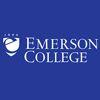
Founded in 1880, Emerson College is located in the heart of Boston’s Theater District. Focused on communication and the arts in a liberal arts context, this independent, nondenominational college serves nearly 4,500 students enrolled in dozens of programs leading to a BA, BS, BFA, MS, MA, or MFA degree. More than 30 minors designed to augment and enhance students’ primary course of study are also available.
The School of the Arts, Department of Visual & Media Arts (VMA) offers both BA and BFA degrees in Media Arts Production. The VMA faculty has created possible plans of study specifically designed to develop expertise in areas such as Animation and Motion Media, Filmmaking, Interactive Media and Games, Post-Production, Writing for Film and Television, and a number of other areas.
Course highlights for animators include Computer Animation, Drawing for Character Design, Film Production, Foundations in Visual and Media Arts Production, Game Design, Narrative Drama, and Writing for Short Subject.
The BA has an optional capstone that allows students to work on an advanced production project. The student will leave the program with either a project, reel or portfolio. The BFA program “encourages innovative exploration of voice, form, culture, and genre.” Students in this program will pursue a yearlong course of work on a thesis-level project.
Graduates of Emerson’s Department of VMA have found employment at places such as Bunim-Murray Productions, Digital Domain, Fox Searchlight, Hallmark Channel, MAD TV, MGM Studios, SCG Productions, Soup2Nuts, World Wide Pants, and many others.
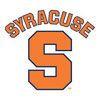
Founded in 1870, Syracuse University (SU) established some of the nation’s earliest architecture and fine arts programs. The school serves approximately 22,322 students enrolled in more than 200 majors and minors, and 200 advanced degree programs across 13 academic units. Programs are offered at SU’s main campus in Syracuse and at locations in New York City, Washington D.C., and Los Angeles.
The College of Visual and Performing Arts (VPA) at Syracuse University houses the Department of Transmedia, which offers several programs for aspiring animators. Pathways include a BFA in Computer Art and Animation, an MFA in Computer Art, and a Minor in Animation.
The 120 credit hour BFA in Computer Art and Animation “explores the possibilities of digital media within a fine art, exploratory, and culturally aware setting,” says the school. The degree program provides instruction in multiple art media where the computer plays the primary role. These media include computer-generated images, 3D computer animation, physical computing, creative computer programming, computer gaming, computer music, and sonic art. Students are mentored to become highly skilled critical thinkers producing art in individual and collaborative contexts. Program highlights include travel to Los Angeles to visit studios such as Filmworks FX and Method Studios, the opportunity to explore other areas through 18 academic and nine free studio elective credits, and internship experiences with local and other studios.
Founded in 1980 by computer artist Edward Zajec, the 60 credit hour MFA in Computer Art “is an artistic research and development program situated in the context of technology where students are encouraged to develop a diverse set of practices within computer art.” The program covers 3D computer animation, computer gaming, computer generated imagery, computer music, creative computer programming, multi-channel installation, physical computing, sonic art, and visual effects.
Students in the program “are expected to develop a strong record of professional practice in a variety of contexts, including exhibition, screenings, public intervention, installation, performance, workshops, gaming events, and viral media, among other forms of public engagement.” Students can expect to complete the MFA program in three years.
Students in both the BFA and MFA programs have access to study abroad programs in 60 countries throughout the world, enabling them “to gain a global perspective as they pursue their studies.”
VPA animation graduates have found employment at major studios such as Blizzard Entertainment, Cartoon Network, Filmworks/FX, Industrial Light and Magic, LucasArts, Moving Picture Company, Pixar, Rhythm and Hues, Sony Pictures Imageworks, Tippett Studios, and many others. Graduates have also presented their work at galleries and media art festivals around the world.

Northeastern University was founded in 1898 as an Evening Institute of the Boston Young Men’s Christian Association (YMCA). The first graduating class of the school’s Evening Law Institute consisted of 21 students. Today, Northeastern has hundreds of thousands of graduates around the world and it serves nearly 38,000 students, according to the school’s most recent enrollment figures.
Northeastern offers 150 undergraduate majors and concentrations and over 125 graduate programs in nine colleges and schools. With nearly 6,000 students and 15 combined undergraduate degrees, the College of Arts, Media and Design (CAMD) houses the Media Arts program, which has several offerings for aspiring animators. Options include a BFA in Media Arts with a Concentration in Animation, a BFA in Game Art and Animation, and a Minor in Animation.
The Media Arts-Animation BFA is an intensive studio program that consists of courses in imaginative and narrative arts, which are required for professional work in documentary films, game art and promotion, visualization, motion graphics, interactive art, illustration and short animated film. Students in the program have “ample opportunities to explore and collaborate with related creative disciplines,” says the school, such as game design, interactive, video, VR/AR/XR and more.
Course highlights include 4D Fundamentals: Sequence and Drawing, American Animation, Animation for Games, Animation Tools, Character Design for Animation, Digital Sculpture and Model Making, Interaction Design, and Interactive Narrative. Students will also work to develop a professional level portfolio throughout the program, “the centerpiece of which will be a one-year capstone project, demonstrating mastery in their specific area of focus.”
The BFA program also offers frequent co-op and experiential learning opportunities as well as global experiences. Co-op employers include Adobe, Amazon, Apple, CBS, Facebook, Microsoft Studios, MIT Design Lab, National Geographic Learning, NBC Universal Television, SAIC, Sony, Viacom, Walt Disney Company, Zynga, and many others.
The Game Art and Animation BFA takes a collaborative approach to learning, which allows students to join forces with their peers and work with students in other majors, culminating in a two-semester senior capstone. Students in the program will have a home college in the College of Arts, Media and Design but will have a minimum of four interdisciplinary courses where students interact and work together with students in the other degrees.
Northeastern also offers a BS in Computer Science/Media Arts through the Khoury College of Computer Sciences. The combined major provides a solid foundation in Computer Science and Media Arts through a curriculum that spans animation, computer graphics, database design, human-computer interaction, photography, and video. Course highlights for the program include Animation Basics and Animation Tools, Animation for Games, Animation 1, 2 and 3, Character Design for Animation, Digital Sculpting and Model Making, Narrative Basics, and Virtual Environment Design.
Graduates of the animation programs at Northeastern University are prepared to seek positions in all areas of animation, digital art, film, game art and design, and many others.

Lesley University was founded in 1909. The school serves around 2,700 undergraduate students and nearly 4,000 graduate students enrolled in more than 100 programs through four colleges and schools. The College of Art & Design is home to undergraduate and graduate art & design programs at Lesley, including eight BFAs and two MFAs. Several programs are available for aspiring animators including a BFA and Certificate in Animation & Motion Media and a Minor in Animation.
The 15 credit hour Minor in Animation explores 2D and 3D, character animation, experimental animation, game art, motion media, and VFX. The 60 credit hour Certificate in Animation & Motion Media is designed for students who already have a bachelor’s degree. The program covers 2D Digital Animation, Audio Production and Design, Business of Animation, Storyboarding for Time Based Media, and more.
Animation & Motion Media BFA students “will explore media and tools that give life to visual stories, characters, and environments,” says the school. They will also experiment with traditional and emerging techniques, from stop-motion to digital CGI and “master new concepts, like storyboarding, character design, and motion art, and build toward creating impactful animated shorts, special effects, advertising spots, and more.”
Courses for the 123 credit hour program are taught by “expert faculty who’ve won Emmys and international awards, run successful studios, and worked for innovators like Nickelodeon, DreamWorks, and White Snake Projects.” Course highlights include Animation Seminar, Audio Production Design, Business of Animation, Character Design, Digital Animation 2D and 3D, Drawing Intensive, Editing Intensive, Game Production, Image in Context, Stop Motion Animation, Toys, Props & Products, and Visual Culture Seminar.
Students will also take two Senior Studio courses, create productions in the school’s “new state-of-the-art visual effects (VFX) facilities, including a 3D fabrication studio, a rendering farm, and a 130-seat screening room,” and complete a required internship that will take them to “real-life studios in Greater Boston.”
The internship helps students “develop critical thinking, collaboration, and problem-solving skills.” Through the internship, students can expect to “gain professional experiences that lead to careers in film, TV, game design, and more.”

Founded in 1769, Dartmouth College is part of the Ivy League. The school serves 6,500 students enrolled in more than 100 different programs in five schools including Arts & Sciences, Geisel School of Medicine, Guarini School of Graduate and Advanced Studies, Thayer School of Engineering, and Tuck School of Business.
The School of Arts & Sciences has more than 50 academic departments and programs. Among them is the Department of Film & Media Studies’ BA program, which offers courses such as Advanced Animation, Animation History, Animation: Principles and Practice, Filmmaking, Game Design Studio, Screenwriting, Videomaking, and Digital Arts courses. A Minor is available as well.
BA program highlights include the opportunity to shape your own emphasis, access to the Animation Lab for Advanced Animation, and off-campus programs such as the Edinburgh Foreign Study Program and the Los Angeles Study Program. Students in the BA and the Minor have the opportunity to directly observe professionals in their field of work and learn from practical experience with working professionals in creative media arts and related institutions of cultural history.
The Los Angeles program highlights rigorous coursework, primary and secondary research in regional facilities, and assorted day-trips to sights and events of interest across Southern California. Graduates of the BA in Film and Media Studies program are prepared to seek positions at animation or game studios, film studios, production studios, advertising and marketing agencies, and more.

The University of Connecticut (UConn) was established in 1881 as Storrs Agricultural School, launching with just three faculty members and 13 male students. Today, the school has more than 18,000 faculty and staff members serving a coed population of more than 32,300 students across one main and four regional campuses.
UConn offers eight undergraduate degrees in 117 majors, 17 graduate degrees in 88 research and professional practice fields of study, and six professional degree programs (JD, LLM, MD, DMD, PharmD, SJD) in 14 schools & colleges. The School of Fine Arts houses the Departments of Art & Art History and Digital Media Design (DMD). Both offer pathways for aspiring animators.
The Art & Art History Department offers a BFA in Art with a Concentration in Illustration/Animation. The purpose of the program is to “prepare students to pursue visual narrative storytelling as an applied art creatively and professionally. Emphasis is on creative process, visual thinking, communication, authoring extended illustration and/or animation works, and understanding professional practice.”
Students in the program will pursue projects in “both analog and digital environments,” including 2D and stop-motion animation; book, editorial, institutional, and children’s illustration; character and environment design; comics, cartoons, and graphic novels; design for products; self-promotion, and more. All students have opportunities to participate in faculty-led Education Abroad Courses in Florence, Italy or London.
The Digital Media Design Department offers a flexible BA in Digital Media and Design (Generalist) and a BFA in Digital Media and Design with Concentrations in 3D Animation and Motion Design and Animation. The 3D Animation Concentration “gives students experience in all aspects of 3D animation production: modeling, lighting, rendering, animation, simulations and visualizations, rigging and compositing for visual effects.” Courses focus on experiential learning through group and personal projects that integrate analysis, critical-thinking, and problem-solving methods.
Students in the program have access to production facilities including include a new Motion Capture studio, render farm, and high-powered Cintiq computer lab. Graduates of this program are prepared to seek careers in animation, character modeling, environmental art, medial/scientific visualization, VFX, virtual cinematography, and many others.
The Motion Design and Animation Concentration begins with coursework in critical thinking, design, drawing, image making and story development. Courses are project-based and electives are available to help students personalize their path. During the final years of the program, students will complete several capstone experiences with clients in Agency, and they will develop a Senior Project.
Students will work with emerging technology, including touch-interactive screens, video walls, projection mapping, and VR equipment, through coursework and engagement in creative research projects. Students at the Storrs campus also have access to a film production studio, audio recording studio, motion capture studio, and Cintiq Lab.
Graduates of the program have established careers in 3D design/animation, art direction, compositing/VFX, graphic design, motion design, social media content producing, video editing and many others.
UConn Storrs graduates have obtained jobs (often within six months of graduation) or paid internships at places such as Adobe, CBS 2 News, and NBC Sports Group. Some have landed positions at smaller animation and design studios like Alessandro Weber Design, DW Advertising, Fusion 360, milk*, and XVIVO | Scientific Animation.

Founded in 1955, New York Institute of Technology (NYIT) serves more than 9,000 students from 44 states and 90 countries across two campuses in state of New York and campuses in Vancouver, Canada and Jonesboro, Arkansas. NYIT also has a campus in China.
New York Institute of Technology offers more than 90 career-focused degrees from Architectural Technology to UX/UI Design and Development. Options for aspiring animators include a BFA in Digital Arts and an MFA in Digital Arts & Design - Animation.
The 125 credit hour BFA provides a "rich foundation in computer animation and digital arts production, along with humanities courses to add meaning, contest, and narrative skills," says the school. Students in the program will take a "diverse slate of courses" and collaborate with fellow design students to hone their creative, design, and technical talents. Course highlights include 2D, 3D and 4D Design, Aesthetics, Color Theory, Communication for Art and Design, Drawing, Computer Graphics I-IV, Introduction to 3-D Modeling and Animation, and Shape and Color. Students will create a Senior Thesis throughout three courses (Pre-production and Production I & II) and a portfolio.
Other program highlights include access to “one of the most well-equipped, highly advanced art media labs in the New York metropolitan area, including state-of-the art hardware, 2D, 3D and graphics software applications, motion capture, gaming, 3D printing, and emerging technologies, as well as practitioners as teachers, mentors, visiting artists, and presenters. Internships, real world projects, site visits, and professional guidance and preparation are also part of the program.
MFA students will “take courses that emphasize creative thinking; character, storytelling, and storyboard development; digital compositing; and special effects experimentation.” Students will “develop a competitive portfolio of innovative computer animation” that reflects their personal style. For example, “artists who wish to pursue a career in commercial computer animation” will create “a suite of animated shorts geared toward a commercial audience, with strong characters and well-defined stories.” Artists who “who prefer to forge a self-directed career in creative animation” will create “a portfolio of work that is self-expressive and ready to be exhibited in galleries or presented at festivals.”
Both BFA and MFA students can learn and create at all NYIT campuses in New York and Beijing, China. Graduates of the programs are prepared to pursue job titles such as 3D Modeler, Animator, Digital Artist, Motion Capture Artist, Motion Graphics Designer, Multimedia Producer, Storyboard Artist, Motion Capture Artist, Video Game Designer, and many others.

Towson University (TU) opened its doors on January 15, 1866 as the Maryland State Normal School. By 1875, the school had enough space to accommodate 300 students. Today, the school sits on a 329-acre campus that accommodates close to 23,000 students, making it the largest university in the Baltimore area and the second-largest university in the University System of Maryland. Students at TU pursue 64 undergraduate majors, 46 master’s programs, and four doctoral degree programs in seven colleges.
The College of Fine Arts & Communication (COFAC), Department of Art, offers a BFA in Art + Design with a Digital Art and Design Concentration and an MFA in Studio Art. The BFA program has a 12-unit specialization in Animation. Required courses include Animation 2D, Animation 3D, Animation Studio, and Photo Imaging – Motion.
Students in the program gain practical expertise, as well as creative insight, while problem solving in a variety of digital contexts. Graduates are prepared for entry-level positions in animation, broadcast design, digital illustration, digital imaging, interactive design, multimedia design, or web design.
The MFA is designed for students who wish to pursue art as a career or become a college-level instructor. The program consists of professional study in animation, digital media, graphic design, illustration, interactive media design, interrelated media, jewelry, metalsmithing, painting, printmaking, photography, and sculpture. Students will develop research and writing skills and they will have the opportunity to focus on a specific area of study “while also being able to choose from a wide variety of learning experiences.”
Graduate seminars and weekly critiques are part of the program as well as assigned studio spaces for full-time students.

The School of the Museum of Fine Arts (SMFA) was founded in 1876 as part of the Museum of Fine Arts, Boston. The school began as “both a technical institute of drawing and painting and a school dedicated to exploring ideas by building visual literacy and expression,” says the school. In 1945, SMFA began a partnership with Tufts University to offer joint degrees.
The school serves around 400 students enrolled in 12 areas of study. Programs lead to the BFA, MFA, MAT, Combined-degree (BFA + BA/BS), Certificate or Studio Diploma. Programs for aspiring animators include a BFA and a Combined BFA + BA/BS. The BFA is entirely elective, so students may choose courses from a range of disciplines. Just a few options include Animation, Digital Media, Film/Video, Graphic Design, and Illustration.
Per the school, “animation at SMFA consists of a hands-on, artist-driven curriculum that provides students with a solid foundation in a variety of 2D, 3D, hand-made, and digital techniques while encouraging the exploration of a student’s voice and ideas.” Students will learn the various techniques of animating, and how to record and mix soundtracks for animation.
Course highlights include Animation Basics, Animation integration, Animation 2, Drawing for Animation, and Stop Motion Animation. Courses for the program are enhanced by in-class exercises, demos, screenings, and visiting artist lectures.
Known as the SMFA/Tufts BFA, the Combined BFA + BA/BS is specifically designed for students intending to pursue their art and academic interests to the fullest possible extent. Upon completion of this program, students will graduate with two degrees from Tufts: a BA or BS in a major of their choice and a BFA. According to the school, the five-year program makes it possible for students to refine and focus their studies in an academic field and to cultivate their fine arts abilities.

Virginia Polytechnic Institute and State University (Virginia Tech) officially opened on October 1, 1872 under the name Virginia Agricultural and Mechanical College. Today, with a 2,600-acre main campus, educational and research facilities across the state, a study-abroad site in Switzerland, and a 1,800-acre agriculture research farm near the main campus, the school serves more than 36,000 students enrolled in 280 undergraduate, graduate, and doctoral majors nine colleges and a graduate school.
The College of Architecture and Urban Studies houses the School of Visual Arts (SOVA), which offers BFA and MFA degrees in Creative Technologies (CT).
Students in this 120 credit hour CT BFA program will take courses in areas such as 3D Animation and Modeling, Digital Painting, Digital Video, and Visual Effects, and Digital Painting. Course highlights include 3D Computer Animation, Computer Animation Studio, Digital Photography, Drawing, and New Media Art. Students may also choose a Plan of Study from the following: Immersive Virtual Environments, Code and Form, and Moving Image. All Plans offer animation coursework.
Immersive Virtual Environments students will take Topics in Computer Animation (Character Modeling), Topics in Computer Animation (Character Animation), Topics in Computer Animation (Video Game Design), and one other 3500 or 3600-level art course.
Code and Form consists of Topics in Computer Animation (Processing), Topics in Digital Art + Design (Multimedia Studio Max/MSP), Intermediate Sculpture, and one other 3500- or 3600-level art course.
Moving Image consists of Topics in New Media Art (Digital Video), Topics in New Media Art (2D Motion Graphics), Topics in New Media Art (Digital Illustration), and one other 3500, 3600 or 3700-level art course.
The MFA in Creative Technologies is a terminal degree program that “prepares students to use digital and new media technology to create, present, communicate, and shape information and imagery,” says the school. The program, which “focuses on creative practice at the intersections of digital technology and artistic exploration,” allows MFA students to design a specific program of study that fits their individual interests.
Students in this 60 credit hour program will have the opportunity to develop original work in 3D animation, creative coding, digital imaging, installation, motion graphics, interactive multi-media design, simulation, sound and imaging, spatial interactivity, video art, virtual environments, web design, and more. SOVA also “strategically” leverages “projects and research opportunities spearheaded by the Institute for Creativity, Arts, and Technology, located at the Moss Arts Center at Virginia Tech.”
A thesis is required to graduate from the MFA program (12 credit hours) and students can complete up to 15 credit hours in field studies and internships.
SOVA Creative Technologies graduates go on to pursue careers in animation, film, fine arts, gaming, motion graphics, video art or production, virtual reality, and others. Some graduates will also pursue graduate programs in these fields

Founded in 1766 as Queen's College, Rutgers, The State University of New Jersey, is the eighth oldest university in the nation. Serving more than 71,000 students from all 50 states and more than 125 countries, Rutgers is also the largest university in the New York/New Jersey metropolitan area.
The school has campuses in Camden, Newark, and New Brunswick. The Camden campus offers 38 undergraduate majors and 29 graduate programs in five colleges and schools.
Camden College of Arts and Sciences houses the Department of Visual, Media, and Performing Arts (VMPA), which offers a BA with a Concentration in Animation.
Students in the program “learn to prepare two and three-dimensional art for animation films, gaming, video, advertising, architecture, medical research, and web design in the most comprehensive and advanced courses available in this region,” says the school. Course highlights include Advanced Computer Studio, Animation Production, Character Animation, Classical Animation, Computer Animation, Computer Graphics, Computer Multimedia, Design for the World Wide Web, Environmental Design, Kinetic Sculpture, New Media Art, and Video and Film Production.
Students in the program will complete Special Studio Projects, which allows them to work closely with a studio faculty adviser to develop and execute a specified series of art works. An internship is also part of the program and all students have access to three on-campus laboratories equipped with state-of-the-art networked computers and post-production units, as well as 2D/3D editing software.
Graduates of the Animation Program at Rutgers have worked in the 3D animation industry as art directors and technical directors for various companies and studios, such as BBC Earth, Blue Sky Studios, Digital Domain, Psyop, Ubisoft, Walt Disney, Warner Brothers, and more. In addition, they have participated making a variety of award-winning movies and games, such as Assassin’s Creed Unity, Frozen, Happy Feet, Ice Age, Sesame Street 3D, and Walking with Dinosaurs 3D.